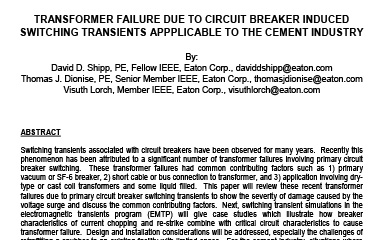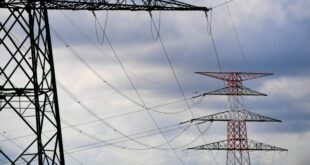Switching transients associated with circuit breakers have been observed for many years. Recently this phenomenon has been attributed to a significant number of transformer failures involving primary circuit breaker switching. These transformer failures had common contributing factors such as 1) primary vacuum or SF-6 breaker. 2) short cable or bus connection to transformer. and 3) application involving dry-type or cast coil transformers and some liquid filled. This paper will review these recent transformer failures due to primary circuit breaker switching transients to show the severity of damage caused by the voltage surge and discuss the common contributing factors. Next. switching transient simulations in the electromagnetic transients program (EMTP) will give case studies which illustrate how breaker characteristics of current chopping and re-strike combine with critical circuit characteristics to cause transformer failure. Design and installation considerations will be addressed. especially the challenges of retrofitting a snubber to an existing facility with limited space. For the cement industry. situations where circuit breaker induced switching transients are likely to damage transformers will be discussed. Finally. several techniques and equipment proven to successfully mitigate the breaker switching transients will be presented including surge arresters. surge capacitors. snubbers and these in combination.

 Iran Energy News Oil, Gas, Petrochemical and Energy Field Specialized Channel
Iran Energy News Oil, Gas, Petrochemical and Energy Field Specialized Channel



